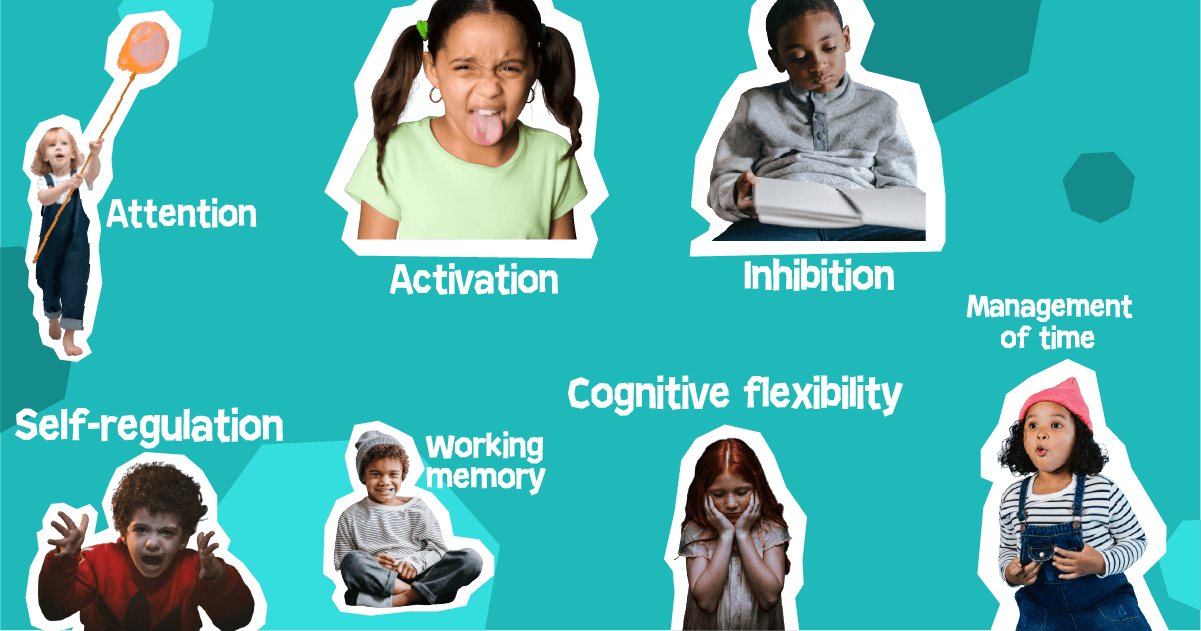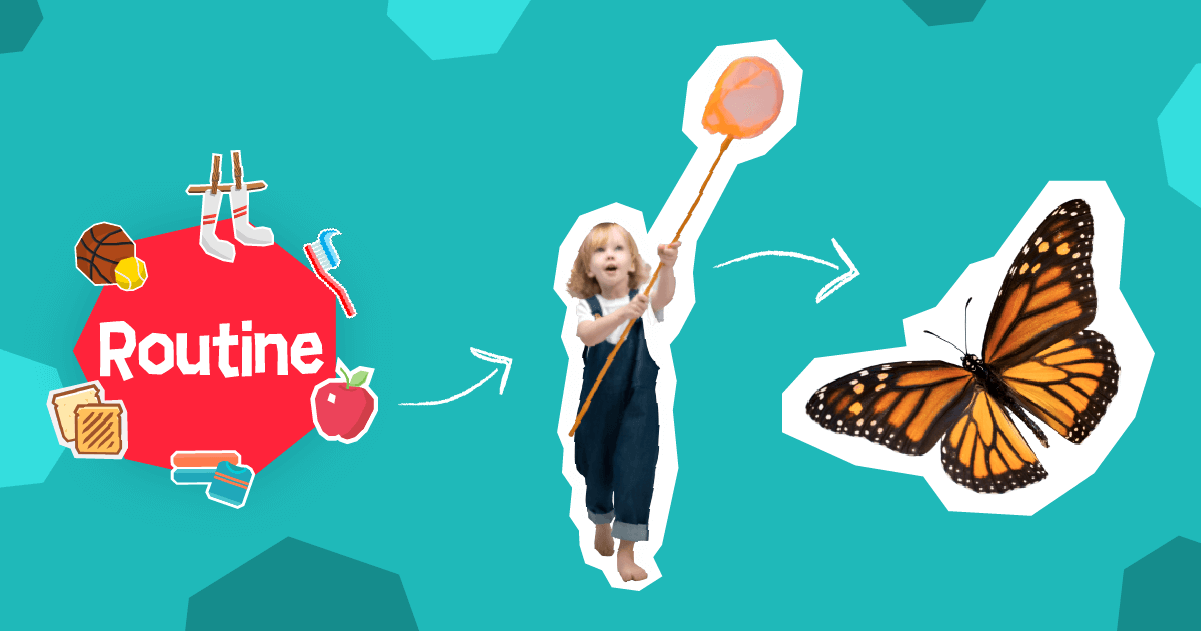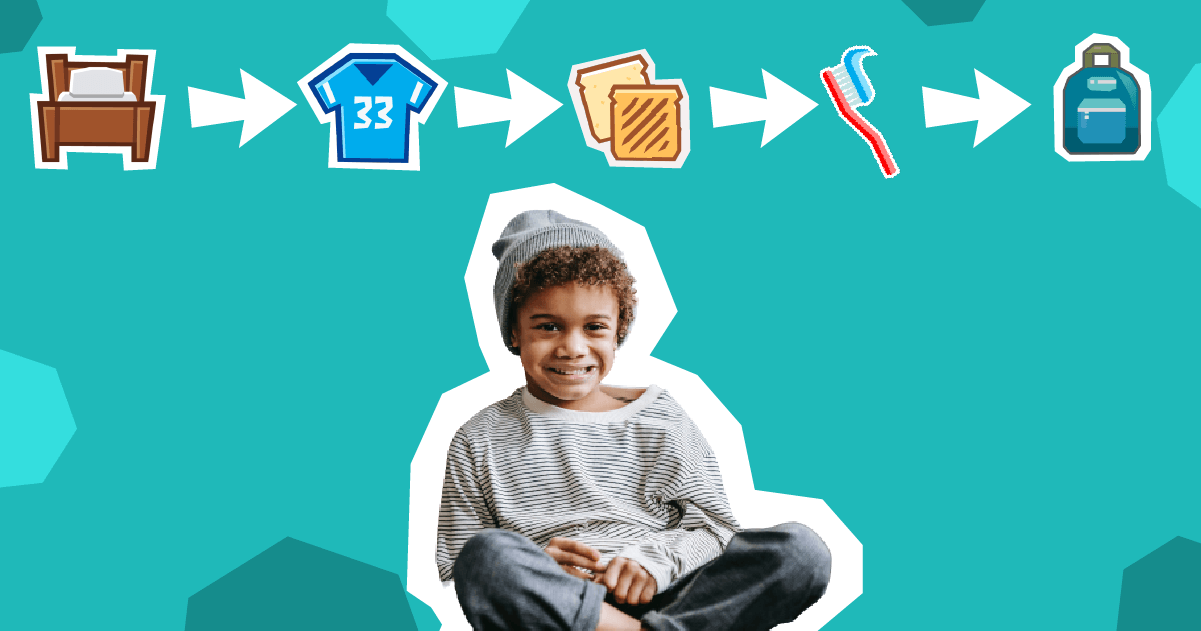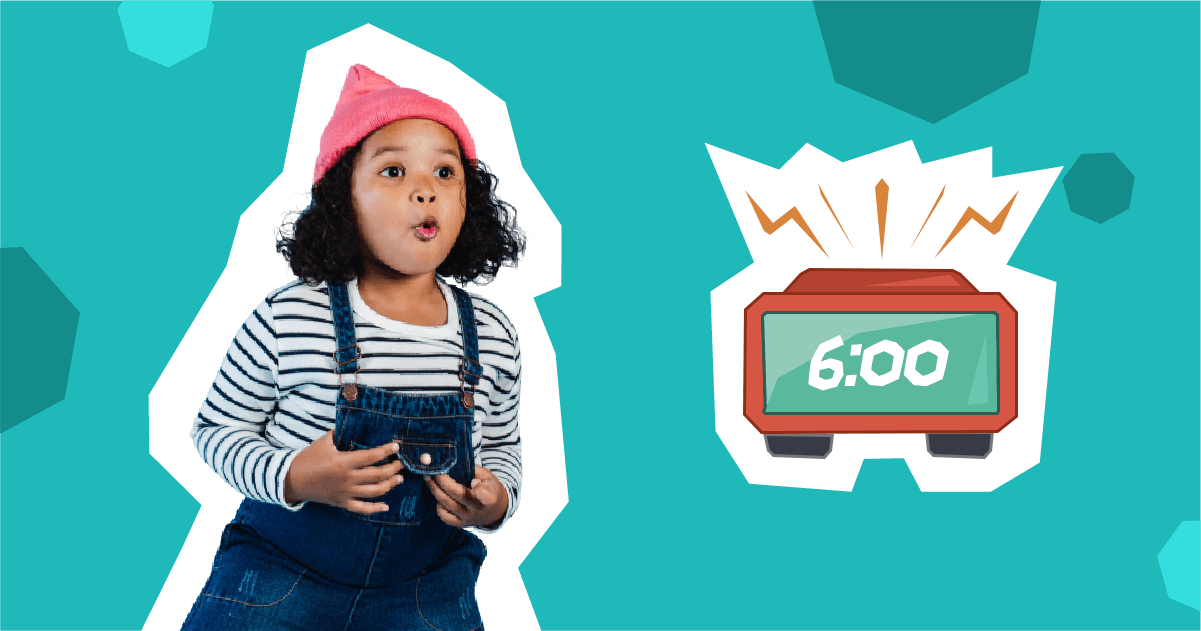7 obstacles to the success of your routines
Certain factors make the routine more complex to set up and maintain. Here are the 7 elements most likely to cause problems and solutions for them!

Chapter 5
The 7 obstacles to the success of your routines
You have established a routine. You have given your child time to adjust to it. You have stayed as close to your child's regular habits as possible. You have retained the flexibility. In short, you did everything in your power to make it work. And it doesn't work!! Help, what do we do?
Do not panic, it is probably one of the following 5 elements that is in question. Before attempting all the solutions listed below, however, it is worth observing. Good observation records not only problematic situations, but details of the entire course of the day.

The situations that happened before, during and after the difficulty should be described. Note what was planned, what actually happened, and all relevant items. It is also advisable to do the same exercise for the days when it went well. These elements will help you identify one of the following 5 situations:
Attention
Have you ever attended a training or a course that was far… far too boring? You had to go but your head was more counting sheep than listening to the relevant and incredibly interesting trainer.
Staying attentive, especially on something that you consider boring... It's not easy.
Imagine for your children who often do not even understand why they have to brush their teeth or even change their pajamas to go to school!
In child psychology, it is a well-known principle: Attention.
Attention, what is it?
The ability to stay focused on a task despite being tired, distracted, or considered boring by the child.

Possible difficulties
Your child may have difficulty:
- Maintaining attention during a conversation, carrying out tasks, etc.;
- Apply abstract instructions, such as "Clean your room";
- Learn and/or understand a new task sequence the first time.
Exemple
You ask your child to clean his room. But, after a few minutes, you realize that he is playing with his toys instead of picking them up.
Strategies to try
- Make reminders regularly.
- Replace abstract instructions with concrete instructions. “Clean your room” would become “Make your bed and put your toys in your trunk”. If necessary, give a demonstration.
- Give one instruction at a time.
- Wait until you have attention (eye contact) with your child to give instructions.
Emotional control and self-regulation
Throughout his childhood, the child is still learning to control his emotions. For toddlers, managing moments of waiting or taking care of themselves is very difficult. The older they get, the more it is possible for them to take care of themselves, but also to regulate their emotions themselves, and even their anxiety! (Source : https://naitreetgrandir.com/fr/etape/5-8-ans/developpement/5-6-ans/fiche.aspx?doc=5-6-ans-affectif )

For example, a child of 2 or 3 years old will not understand that he feels bored in a moment of expectation and that it is possible for him to get bored himself. It is therefore necessary to plan in the routine something to occupy the child in this transition. The older the child gets, the longer the time he takes care of alone can be since he will have developed the cognitive ability to regulate his emotions. It is therefore relevant to check whether the waiting times are not too long.
What is self-regulation?
The ability to control one's physical (gestures, words), cognitive (thoughts) and affective (emotions) activities.
Possible difficulties
Your child may have difficulty:
- Evaluate the options before making a decision (e.g. consider the consequences of not following an instruction);
Controlling one's actions to achieve an objective; - Control your behavior in stressful situations.
- Exemple
Your child gets angry when he can't fold his clothes properly.
Strategies to try
- Give clear instructions.
- Use visual memos.
- Tell your child about changes in routine and explain the reasons.
- Encourage your child to talk to himself.
Some examples :
- “Stop! Stopped! (to stop bad behavior)
- “What is important?, What am I being asked to do? (to refocus on his task)
- " Whoops! It is too fast! Slowly! Calms you. " (to relax)
- “Stop! Stopped! (to stop bad behavior)
- Praise your child for good moves.
Inhibition
Inhibition is the “intentional control of behavior” (source: https://lahautevoltige.ca/2018/11/08/travailler-capacites-dinhibition-chez-enfant/). It is therefore, for the child, the ability to retain his impulse for a given behavior. When the child has little or no inhibition, it can be difficult for him to perform tasks in his routine that seem contrary to his impulse.

First, it is important to recognize that it is the impulses of the child that cause difficulty in following the routine. Then you have to get around that impulse. If the child is used, for example, to entering the house with his shoes on, you can add a bell to the door to remind him to take them off or use pictograms in strategic places. You can download our set of pictograms for free here.
You can also adapt the schedule to the impulse. For example, if it is customary for the child to leave his bag in the hallway rather than in his room, we can designate a specific place where to put it.
Inhibition, what is it?
The ability to control one's thoughts and impulses, to pause to think before acting.
Possible difficulties
Your child may have difficulty:
- controlling his words or spontaneous gestures;
- perform tasks that require thought (e.g. homework).
Exemple
Your child is completely captivated by television. He can't stop this activity to start his homework. Constantly bringing him to order is a source of conflict.
Strategies to try
- Give concrete examples. Ex.: “To avoid being distracted during your homework and going back to watching television, choose a quiet place where you can concentrate. »
- Focus on positive reinforcement.
- Teach the proper ways to ask for help.
Cognitive flexibility
Cognitive flexibility is the ability to accept new ideas or changes in ideas. For example, if there is no more cereal, agreeing to eat toast requires cognitive flexibility. For younger children or children living with an adaptation challenge, cognitive flexibility is not very present. It is therefore possible that, when the routine requires a change, it is a problem.
Until you can help your child improve their cognitive flexibility, it is important to think about all possible scenarios and include them all.

For example, for a journey, it is advisable to put the bicycle, the bus and the car if these are the three possible modes of transport. So identify situations where the routine was not followed to the letter to see if this triggered a problematic situation. This will help you see if it makes sense to work out all the possibilities on your routine or not.
What is cognitive flexibility?
The ability to adapt to change, planned or unplanned.
Possible difficulties
Your child may have difficulty:
- Modify his behavior according to the situation;
- Identify alone the steps to follow to carry out a task.
Exemple
Your child feels stressed or frustrated when he wakes up late and needs to complete his morning routine more quickly.
Strategies to try
- Prepare your child for change.
- Name the tasks or routines that will be changed permanently or temporarily.
- Explain the reasons and possible difficulties. Find solutions together.
- Tell him when the change will take place. E.g.: “Friday after school, Grandma will pick you up and you will go to sleep at her house, because we are having dinner with friends. »
- Name the tasks or routines that will be changed permanently or temporarily.
- Keep some flexibility in routines.
- Vary the time allotted for each task, the order of the steps, etc.
- Accept the child's proposals for change.
- Teach strategies for asking for help and staying calm.
Source : http://rire.ctreq.qc.ca/2016/10/fonctions-executives-prescolaire/
Working memory
Working memory is the ability to recall things in the short term. It is the capacity that is mainly affected in the brain of people living with ADD. The information reaches the brain, but does not stay there long enough for the related action to be accomplished. This is what causes, for example, the difficulty some people have in spelling words out loud or doing mental calculations.
In a routine context, it may happen that between the time when the child assimilates the information of his next task and the time to perform it, the information is no longer in his brain.
To help your child, there should be the shortest amount of time between when they receive the information and the task. For example, the routine hanging in the bathroom can help him remember the steps to follow. Or simply pictograms of what he must do or remember.

Alternatively, handing out a visual symbol of the task they are about to perform can help the child. For example, giving him his toothbrush by directing him to the bathroom or giving him an empty laundry basket by asking him to do the laundry.
What is working memory?
The ability to memorize information and use it in different contexts.
Possible difficulties
Your child may have difficulty:
- Remember verbal instructions;
- Remember what he has just read;
- Remember all the steps in the routine (making your bed, picking up your toys, etc.).
- Keeping the thread when performing a task.
Exemple
You ask your child to prepare his snack for the next day during homework time. Once his task is done (homework), your child moves on and forgets about the snack.
Strategies to try
- Plan several steps.
- Number the tasks to be performed, emphasizing the number of steps to be completed. The child can use the number to make sure he has done everything. Ex.: “There were 4 stages. How many steps did I take? »
- Ask the child to formulate in his or her own words the steps to be taken.
- Use visual cues, like Kairos icons.
- Make reminders. Because forgetting is human!
Management of time
It may happen that there are too many tasks for the amount of time required or that the child has difficulty in proportioning his time adequately. If, for example, he spends 30 minutes in the shower when you had planned for ten, it will cost you more for hot water, which will influence the rest of the day. In this regard, you have two options. Either give your child a time management tool like a timer and add the time to spend on your routine. For example, indicate, near the shower, the 10-minute symbol of your timer. Otherwise, you adapt the routine to your child's usual deadlines, now that they are known.
Knowing that you have overloaded the child's schedule in relation to his real ability to accomplish the tasks, you will have to lower your requirements as to the quantity of things on the schedule. Maybe plan for longer dressing and cleaning times and shorter playtimes? Up to you!

Now that you have identified the factors causing your routine difficulty, take it step by step. You will never know what was problematic if you change all of a sudden. Go with your biggest guess and slowly adjust the routine to come up with a balance and stable routine that works for everyone.
One of our best tips for making it all as easy as possible: Build your routines with your kids! It is super important to involve the child in the process. After all, it's teamwork!
What is time management?
The ability to plan and estimate the time required to complete and complete a task.
Possible difficulties
Your child may have difficulty:
- Watch time pass;
- Complete a task on time;
- Identify the appropriate times to perform certain tasks or activities;
- Arrive on time;
- Avoid procrastinating;
Submitting schoolwork late.
Exemple
Your child remains at the table for a long time in the morning during breakfast. He eats, chats with the other members of the family and doesn't see the time slipping away. At the last minute, he dresses in a hurry, forgets to brush his teeth and misses being late for school.
Strategies to try
- Perform reminders, provide your child with checklists, and use Kairos for all your routines. ;)
- Use a visual clock (Time Timer) to help the child see the time passing. Interesting fact: for his part, Kairos notifies the child of the remaining time!
- Use a visual diary and post memos in prominent places.
- Assign deadlines to help your child plan.
- Allow more time for certain steps or break up tasks.
- Keep some flexibility in routines.
Activation
Your routine is ready, you've made sure you're equipped with the best tools for you and your children, but he still can't find the motivation to start their tasks...
It's normal ! And this is a well-known principle: activation.
In the same way that it's hard (even as an adult) not to procrastinate for the tasks you don't want to do (I'm looking at you, sweeper and weekly bathroom cleaning!), it's not easier for your children who don't understand why brushing their teeth is important.

What is activation?
The ability to take action.
Possible difficulties
Your child may have difficulty:
- Find the motivation to start a task, especially if he does not find it interesting (housework, tidying up, etc.);
- Avoid procrastinating;
- Take action without the presence of another person.
Exemple
When he wakes up, your child is lounging in bed or playing with his games instead of getting ready for school.
Strategies to try
- Involve the child in creating the routine.
- Clearly explain the purpose of each task.
- Use a cue to recall the start of the routine.
- Alternate between tasks that are appealing and those that are less appealing.
- Again, praise your child for their good moves!
It is important to understand that there will definitely be difficulties in setting up your routines. However, it is definitely worth it! You're on your way to calmer mornings, with less repetition and more fun with the whole family.
One thing to keep in mind through the process - stay positive! Precisely, how can positive parenting help you not only in your routines, but also in your daily life?
To the rescue of your sane spirit - positive parenting
In addition to the tools and solutions for your routines, a super important principle to keep in mind in all your interactions is positive parenting. Positive reinforcement and a good attitude will always work better than negative instructions and punishment! See what our experts have to say about positive parenting in the next section!